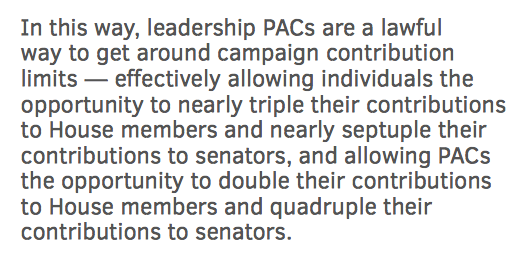The Brussels resolution is excellent as a declaration of principle – but what about its practical execution?
And the most serious question of all is: *how* should we organise? Now, it seems to me that we must commence by organising as *trade-unionists* using our united strength as a means of reaching the ultimate goal, the
"How Should We Organize?", Eleanor Marx
marxists.org/archive/draper…
And how is the family of the Upper Ten Thousand constituted so that the woman is legally subjected to
...
And how does the women’s question manifest itself in the ranks of the
In these circles the woman does not enjoy equality with the man as owner of private property, as obtains in the higher circles. Nor does she enjoy equality as a working-woman, as obtains in proletarian circles. The women
...
For the proletarian woman, it is
The wife of the proletarian, in consequence, achieved her economic independence. But, in all conscience, she paid for it
Consequently, the liberation struggle of the proletarian woman cannot be – as it is for the
"Only with the proletarian woman will socialism be victorious!" Clara Zetkin
marxists.org/archive/draper…
In order to build a great socialist society, it is
From the present situation it is not difficult to understand that genuine equality between the
"Women's Liberation in China," Soong Ching Ling
marxists.org/subject/china/…
But there still remain considerable misunderstandings and misinterpretations of Marxist positions which have led some women who
Some of these theorists maintain that women constitute a special class or caste. Such definitions are not only alien to the views of Marxism but lead to the false
The findings of the Marxist method, which have laid the groundwork for explaining the genesis of woman’s degradation, can be summed up in the
First, women were not always the oppressed or “second” sex. Anthropology, or the study of prehistory, tells us the contrary. Throughout primitive society, which was the epoch of tribal collectivism, women were the equals of men and recognized by man as
Second, the downfall of women coincided with the breakup of the matriarchal clan commune and its replacement by class-divided society with its institutions of the patriarchal family, private property and state power.
This, briefly, is the Marxist approach to the origins of woman’s oppression. Her subordination did not come about through any biological deficiency as a sex. It was the result of the
But the downfall of women cannot be fully understood, nor a correct social and political solution worked out for their liberation, without seeing what
...
Consequently, the pairing family, which appeared at the dawn of the family system, differed radically from the nuclear family of our times. In our ruthless competitive capitalist system, every tiny
This was the material basis for the
It is sometimes said or implied that male domination has always existed and that women have always been brutally treated by men. Contrariwise, it is also widely
...
As Engels pointed out, with the rise of private property,
Women, who had once lived and worked together as a community of sisters and raised
This abasement
...
Here it is necessary to note a distinction between two degrees of women’s oppression in monogamous family life under the system of
So long as agriculture and craft industry remained dominant in
This changed with the rise of industrial and monopoly capitalism, and the nuclear family. Once masses of men were dispossessed from the land and small businesses to become wage
By degrees, therefore, as women were stripped of their economic self-dependence, they fell ever lower in social esteem. At the beginning
Women were then given two dismal alternatives. They could either seek a husband as provider and be penned up thereafter as housewives in city tenements or apartments to raise the next generation of wage slaves. Or the
Over the past generations women wageworkers have conducted their own labor struggles
Despite the hypocritical homage paid to womankind as the “sacred mother” and devoted homemaker, the worth of women sank to its lowest point under capitalism. Since
While wealthy women can hire servants to do the dull chores for them, poor women are riveted to an endless grind for their whole lives. Their condition of servitude is compounded when they are obliged to take an outside job to help sustain the
Even middle-class housewives in the Western world, despite their economic advantages, are victimized by capitalism. The isolated, monotonous, trivial circumstances of their lives lead them
The capitalists have ample reason for glorifying the nuclear family. Its petty household is a gold mine for all sorts of hucksters from real estate agents to the
In the second place, the isolation of women, each enclosed in a private home and tied to the same
What is the most instructive lesson to be drawn from this highly condensed survey of the long imprisonment of womankind in the
Women, then, have been condemned to their oppressed status by the same social forces and relations which have brought about the oppression of one class by another, one race by another, and one nation by another. It is the capitalist system - the ultimate stage in
Some women in the liberation movement dispute these fundamental theses of Marxism. They say that the female sex represents a separate caste or class.
First, are women a caste? The caste hierarchy
It is important to note, however, that the caste system was also inherently and at birth a class system. Furthermore, while the caste system reached its fullest development only in
...
Neither in the caste system nor the class system - nor in their combinations - have women comprised a separate caste or class.
The fact that women occupy an inferior status as a sex does not ipso facto make women either an inferior caste or class. Even in ancient India women belonged to
...
In that document [Roxanne Dunbar] says that her characterization of women as an exploited caste is nothing new; that Marx and Engels likewise “analyzed the position of the
...
What Marxists say is that we live under an international class system. And they further
...
Turning to the other position, it is even more incorrect to characterize
Where do women stand in relation to these polar class forces? They belong to
This is not an attempt to divide women from one anther but simply to recognize the actual divisions that exist. The notion that all women as a sex have more
...
Tens of thousands of women went to the Washington antiwar demonstrations on November 1969 and again in May 1970. Did they have more in common with the militant men marching beside
It is true that all forms of class society have been male-dominated and that men are trained from the cradle on to be chauvinistic. But it is not true that men as such represent the main enemy of women. This
Although the struggle
A false theoretical position easily leads to a false strategy in the struggle for women’s liberation. Such is the case with a segment of the Redstockings who state in their Manifesto that “women are an oppressed class.” [2] If all women compose a class then all men must
Isn’t there a suggestion of this same line in Roxanne Dunbar’s assertion that female liberation is the basis for social revolution? This is far from Marxist strategy since it turns the real situation on its head.
The underlying source of women’s oppression, which is capitalism, cannot be abolished by women alone, nor by a coalition of women drawn from all classes. It will require a worldwide struggle for socialism
...
The maxim of the Irish revolutionists - “who would be free themselves must strike the blow” -
In the course of our struggle, and as part of it, we will reeducate men who have
Finally, to say that women form a
As Marxists we have a more realistic and hopeful message. We deny that women’s inferiority was predestined by her biological makeup or has always existed. Far from being eternal, woman’s subjugation and the
"Women: Caste, Class or Oppressed Sex," Evelyn Reed
marxists.org/archive/reed-e…


















